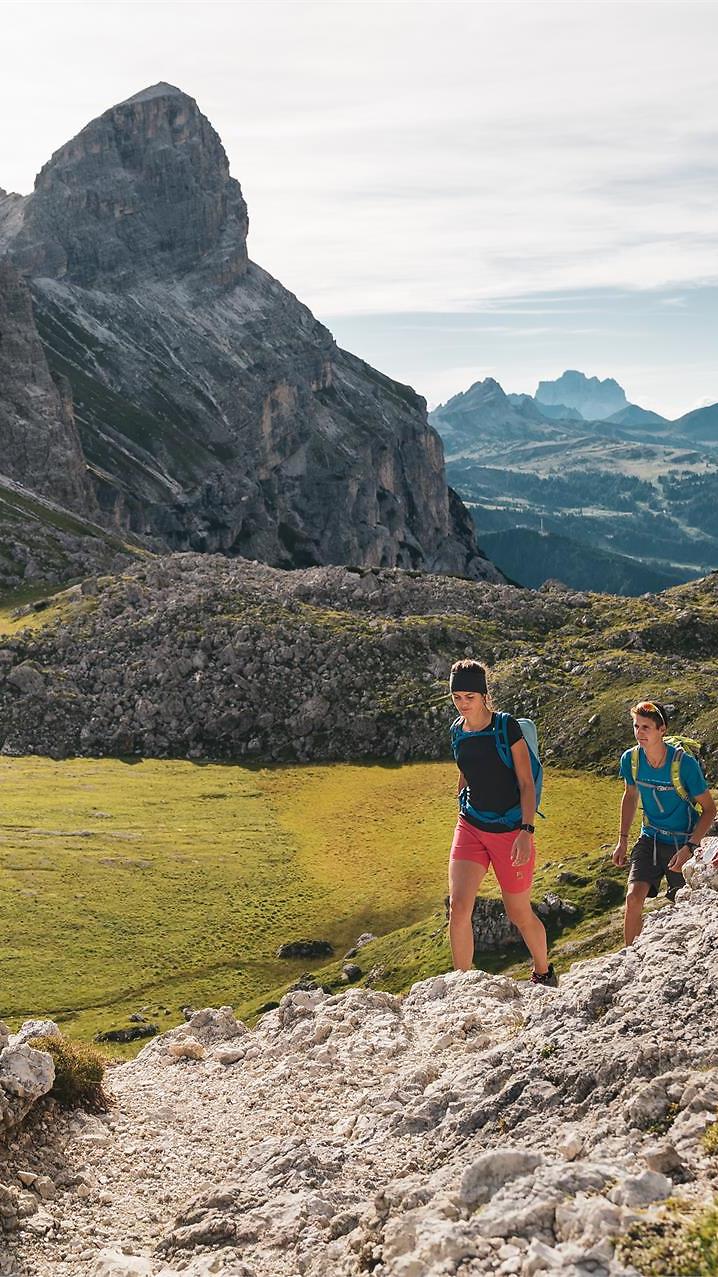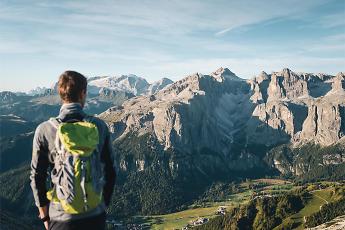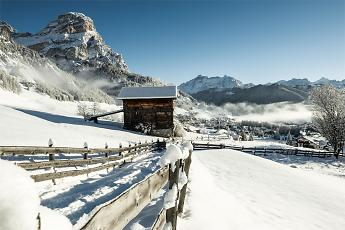
Nature Park Puez - Odle
The Alta Badia Valley, which spreads over 16 km in the southeastern part of Südtirol/Alto Adige, lies in a sunny basin surrounded by imposing Dolomite peaks and framed by two UNESCO World Heritage Sites, the Puez - Odle Nature Park and the Fanes - Senes – Braies Nature Park.
The Puez-Odle natural park, measures 10,722 hectares and spreads across the municipalities of Corvara and Badia in Alta Badia, Ortisei, St Christina and Selva in Val Gardena as well as San Martino in Badia and Funes.
Part of the natural park are the mountains of the Odle group, the Pütia group and the high-plateau-like Puez group with the Sassongher mountain.
The Dolomite High Route no. 2, known as the "high route of legends" leads through the area of the Puez natural park.
From a geological perspective, Puez-Odle natural park is particularly interesting since all the rock strata typical of the Dolomites can be found here, such as Gröden limestone, Bellerophon strata, Wengen and St Cassian strata, Schlern dolomite, Raibler strata, Dachstein dolomite as well as Jurassic and Cretaceous rocks.
The Dolomite massif which splits off from the orographic core of the Sella and turns north in the Puez and Geisler group, has its outermost branch in the Peitlerkofel. Beyond that, the quartz foothills form the Lüsen caldera and the Plose elevation, whereas the Porphyr massif splits off from the Raschötz in the west.
This difference of geological structures result in this zone's diversity of shapes and landscapes. The grey and uniform Puez plateau's typical, tabular structure forms a contrast to the slim and bold shapes of the Cir and Geisler peaks, the Sassongher and the Peitlerkofel. This groups' sceneries are characterised by recessed, cliffy and austere shapes. Kilometre by kilometre, the eyes wander over deep solitude, a sort of moon landscape whose rough waves, grey pebble fields and white rock ledges which embody a harsh sterility.





































